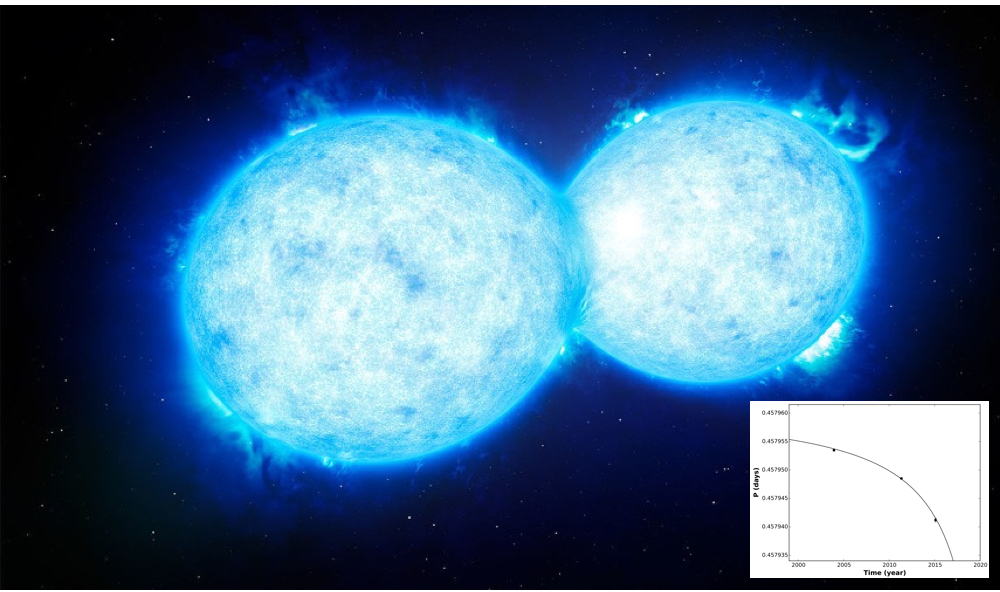
 Credit: Science; L. Molnar et al.
Credit: Science; L. Molnar et al.
The Next Red Nova?
Binary stars, two stars bound by gravity which orbit around their center of mass, are quite common. As known since the time of Kepler, the orbital periods of binaries are dependent on the separation of the stars. Some binary stars, called contact binaries, are so close that (as the name implies) they touch each other (as shown in the illustration above). Contact binaries are peculiar and complex objects - both stars may be surrounded and submerged within a common envelope of gas, and the stars may exchange mass from one to the other through this envelope. Changes in the stellar masses of the component stars, and interactions between the stellar magnetic fields, can help drive the stars closer and closer, making them revolve faster and faster until they violently merge into a single object, producing an enormous outpouring of energy. Astronomers have seen a number of cosmic explosions which they have called red novae, which are believed to be produced by such stellar mergers. These events, as the name implies, are characterized by a reddish color, and their explosions are brighter than normal novae (where outbursts are driven by the accumulation of matter from a companion star onto the surface of a white dwarf) but fainter than supernovae (where the outburst is produced by the complete destruction of a star). Astronomers have recently identified an otherwise innocuous star called KIC 9832227 as a contact binary system whose orbital period is decreasing with time (shown in the inset above). The shrinking period indicates that the stars are getting closer to each other, and analysis of the orbital period change (shown by the solid line in the graph) indicates that the orbit will shrink so much that the two stars will merge in only about 5 years. Keep an eye on this binary to watch the fireworks.
Published: January 9, 2017
<
HEA Dictionary ● Archive
● Search HEAPOW
● Other Languages
● HEAPOW on Facebook
● Download all Images
● Education ● HEAD
>

Each week the HEASARC
brings you new, exciting and beautiful images from X-ray and Gamma ray
astronomy. Check back each week and be sure to check out the HEAPOW archive!
Last modified Tuesday, 27-Feb-2024 10:10:16 EST


